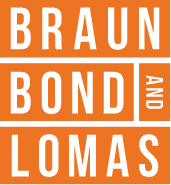The Supreme Court has clarified the boundaries of their landmark decision in Clayton v Clayton [Vaughan Road Property Trust] [2016] NZSC 29 (Clayton) by issuing their decision in Cooper v Pinney [2024] NZSC 181 (Cooper).
Both cases involved family trusts and claims under the Property (Relationships) Act 1976 (PRA), with a particular focus on the extent of one party’s powers to make decisions regarding trust(s), the trustees and beneficiaries, and trust assets. In the relationship property context, the issue was whether such powers should be considered “property” under the definition provided in s 2 of the PRA. Consideration on the existence of fiduciary obligations were key in both decisions and lead to different outcomes.
Clayton Decision
There has been considerable discussion around the Clayton decision already, and this is therefore a high level summary of that case. Mr Clayton had successfully built a sawmilling and timber processing business. Around 10 years into the marriage, Mr Clayton settled the Vaughan Road Property Trust (VRPT), where he was the sole trustee.
The Supreme Court considered that the definition of “property” in s 2 of the PRA was capable of including the bundle of rights and powers under a trust, as it reflected the statutory context and purpose of the PRA.
The rights and powers that Mr Clayton had in the trust included:
He was the sole trustee with the ability to bring forward the vesting date and appoint all trust capital to a discretionary beneficiary;
The power to appoint and remove trustees;
The effective ability to resettle the trust;
The ability to remove and appoint any discretionary beneficiaries; and
There were also a series of provisions that significantly watered down the fiduciary duties which Mr Clayton would normally have owed as a trustee, including that he was not required to consider all of the beneficiaries’ interests, and he did not have to be impartial in his decision-making as a trustee.
These rights and powers under the trust deed, vested in Mr Clayton alone, provided Mr Clayton with effective control over the assets and decision-making in respect of the VRPT. The Court determined that the accumulation of such powers and the fact these gave Mr Clayton effective control over all aspects of the VRPT amounted to a bundle of rights which met the definition of property under the PRA.
Background to Cooper
This case involved a relationship property claim bought by Ms Cooper in respect of the MRW Pinney Trust (MRWPT). Ms Cooper and Mr Pinney had been in a de facto relationship between 2004 and 2005. MRWPT was settled in 2005 by Mr Pinney and three others to receive assets from a trust settled by his father.
Mr Pinney was one of a number of MRWPT beneficiaries, and held the power to appoint and remove trustees. While he was one of the original trustees, he was not a trustee at the time of the proceeding.
Distinguishing Features Between the Two Decisions
Mr Clayton had sole control over the trust in that case, with fiduciary obligations expressly omitted, whereas Mr Pinney's control was constrained by fiduciary duties and the requirement for unanimity in trustee decision-making.
The facts that:
Mr Pinney was bound by fiduciary duties to the beneficiaries of the MRWPT;
Trustee unanimity was required in MRWPT decision-making; and
Mr Pinney did not have the power to unilaterally remove beneficiaries or simply distribute assets of the MRWPT to himself;
set the circumstances of Clayton and Cooper apart. The Court determined that Mr Pinney’s more limited rights and powers under the MRWPT did not meet the definition of property for the purposes of the PRA.
Trusts Act 2019
Cooper was decided under the Trustee Act 1956 rather than the current Trusts Act 2019. This was because the actions challenged occurred before the commencement of the 2019 Act.
The Supreme Court however commented that the 2019 Act was intended to reflect the current legal position by re-stating and re-forming the mandatory duties for trustees. These include needing to know, and act in accordance with, the terms of the trust; to act in good faith and honestly, for the benefit of the beneficiaries; and to exercise powers for a proper purpose.
Conclusion
With the recent prevalence of claims under the PRA and the Family Proceedings Act 1980 (FPA) with respect to discretionary family trusts, the issue of the bundle of rights as property and the quantum of awards arising out of those bundles has been a developing area of law.
Cooper offers some needed clarity on the extent to which the Court could find that a trustee’s powers under a deed amount to property in the PRA context.
Trust instruments are frequently tested and interpreted in family litigation. These cases are a continuation of a developing underlying principle that property, although held in trust, can still be considered relationship property where it is effectively under the control of, and can be used for the benefit of, one person. The cases highlight the importance of taking sound, informed and up-to-date legal advice regarding the implications of trust settlements and relationship property agreements, before a dispute arises.
The team at Braun Bond and Lomas can apply their knowledge and experience in this developing area of law to assist you in avoiding or minimising the risk of a dispute arising, or we can assist where a dispute has already arisen, whether in negotiating to avert impending Court proceedings or conducting those proceedings which are inevitable or already underway.






